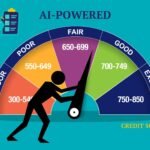The traditional banking and lending system?
Too slow. Too rigid. Too outdated.
Enter Open Finance and Data-Driven Lending — two revolutionaries turning dusty old loan books into high-speed digital intelligence hubs.
This blog dives deep into how Open Finance is smashing silos and how data is becoming the new oxygen for smarter, faster, and more inclusive lending.
-
What Is Open Finance?
Open Finance is the next-level evolution of Open Banking. It’s not just about banks sharing data — it’s about giving users full control over all their financial data: insurance, pensions, investments, EMIs, savings, everything.
🔸 User-Controlled Data Sharing
Consumers can authorize third parties (like fintech apps) to access their complete financial footprint — securely. This breaks monopoly over data hoarded by big banks and gives birth to competition, innovation, and personalization in financial services.
🔸 Beyond Banks
While Open Banking was bank-centric, Open Finance spreads across mutual funds, credit cards, loans, insurance, and even retirement accounts — making it a 360-degree view of a person’s financial life.
🔸 APIs: The Infrastructure Backbone
It runs on APIs (Application Programming Interfaces) — secure pipelines that enable authorized financial data to move between institutions in real-time.
-
How Open Finance is Changing Lending Forever
🔸 Hyper-Personalized Lending Products
Forget cookie-cutter loans. With detailed financial behavior across platforms, lenders can now offer ultra-tailored loans based on individual risk, spending patterns, and earning potential — not just credit scores.
🔸 More People Get Approved
Traditional credit systems excluded freelancers, gig workers, or first-time borrowers. Open Finance uses alternative data like rent payments, mobile bills, and investment behavior — making lending more inclusive.
🔸 Dynamic Creditworthiness Models
Instead of seeing your financial snapshot from last month, lenders now get a real-time streaming movie of your financial life. This means dynamic, constantly updated creditworthiness assessments, leading to better loan terms for consumers and reduced NPA risk for lenders.
-
Data-Driven Lending: Brains Behind the Operation
While Open Finance opens the data floodgates, Data-Driven Lending is what makes sense of the chaos.
🔸 Machine Learning-Backed Risk Analysis
Modern lenders use AI models to assess default risk, not just based on income or repayment history, but on hundreds of micro-indicators — from your ride-hailing frequency to your e-commerce return rate.
🔸 Faster Approvals, Fewer Human Errors
No need to manually review documents. Algorithms can auto-scan, auto-score, and auto-approve loans in under 5 minutes. Human bias? Out the window.
🔸 Real-Time Fraud Detection
Using behavioral analytics, lenders can flag suspicious activity instantly — for example, someone applying for 5 loans in 10 minutes across different apps.
-
The India Advantage: AA Framework and the Fintech Army
India is leading the Open Finance charge with its Account Aggregator (AA) framework — regulated by the RBI.
🔸 AA System Explained Simply
Imagine a secure switch that lets users send their financial data from multiple banks/NBFCs to a loan app, instantly, without sharing a single password. That’s what AA does — safely, in encrypted formats, and with user consent.
🔸 Fintechs Are Exploding
Startups like Cred, KreditBee, CASHe, and Navi are already leveraging this to offer low-interest loans, zero-collateral credit lines, and credit-building products to people who were previously invisible to the credit system.
🔸 Inclusion + Scale
Whether you’re a cab driver with digital transaction history or a salaried millennial with BNPL addiction — you’re in the system now. This scale is what makes Open Finance insanely powerful in a country like India.
-
Benefits to the Lenders
🔸 Reduced Default Rates
More holistic data = better risk prediction. That means fewer bad loans and NPAs.
🔸 Customer Stickiness & Loyalty
Tailored loan terms, flexible repayment models, and instant approvals make borrowers feel understood — increasing long-term retention.
🔸 Wider Audience
With Open Finance and AI-driven models, lenders can tap into previously ignored markets like gig workers, students, and rural entrepreneurs.
-
Risks & Oversight
Of course, it’s not all sunshine and fintech.
🔸 Data Privacy Concerns
The more data that flows, the higher the risk of leaks and breaches. That’s why frameworks like DEPA (Data Empowerment and Protection Architecture) and AAs are critical to protecting user data.
🔸 Algorithmic Bias
AI models are only as good as the data they’re fed. If historical data has bias, it can seep into modern lending algorithms, hurting marginalized groups.
🔸 Regulatory Lag
The market is innovating faster than regulators can react. This leads to grey zones, especially when fintechs act as NBFCs without strict accountability.
-
Future of Credit in an Open Finance World
The combo of Open Finance + AI + Real-time Data is building a credit system of the future that is:
👉 Instant — No more waiting days for approvals.
👉 Inclusive — Serving the unbanked and underbanked.
👉 Intelligent — Learning and adapting every day.
👉 Invisible — Embedded in your apps, purchases, and platforms without friction.
We’re headed toward a world where your data works for you, loans feel more human, and financial freedom isn’t a privilege — it’s protocol.
-
Final Thoughts
Open Finance and Data-Driven Lending aren’t just fintech buzzwords — they’re the backbone of modern financial empowerment. As more people shift to digital ecosystems, the old-school way of evaluating credit just won’t cut it anymore.
This isn’t just the future of lending —
It’s the future of trust, access, and economic acceleration.




